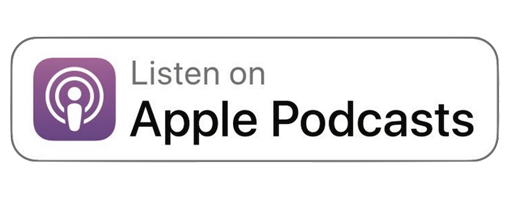Speak Clear English - Enroll Today
EPISÓDIO DE HOJE:
A linguagem:
poderosa ferramenta humana
No artigo de hoje nós falaremos sobre a Linguagem, um instrumento poderoso de comunicação e transmissão de informações. Segundo pesquisa do Ethnologue, realizada em 2021, existem 7.139 idiomas no mundo. Os continentes africano e asiático dominam 62% das línguas mais comuns ao redor do mundo. No entanto, há uma ameaça de extinção de 3.018 línguas (42%). Um idioma pode entrar em extinção quando possui poucos falantes, geralmente menos de 1.000 pessoas. Já a estabilidade e continuidade de um idioma é garantido quando mais de 50% de novos falantes, especialmente, crianças, aprendem a usar determinado idioma.
Nós gostaríamos muito de saber sobre as razões que levaram você a estudar Inglês. Se você tiver alguma dúvida sobre o conteúdo apresentado aqui, pode entrar em contato conosco nos comentários e no Instagram @studyenglishwithandrea
A Linguagem Humana
A linguagem faz menção tanto à capacidade de comunicação quanto a criação de um sistema complexo para se transmitir uma mensagem. É importante mencionar ainda que linguagem não se limita às “línguas faladas no países”. Ela se estende também às “linguagens criadas artificialmente”, como a linguagem de programação de computadores, criando-se um sistema padrão, que pode possuir códigos ou não.
A linguagem humana, reconhecida como um sistema de comunicação, é diferente e muito mais complexa do que qualquer outro sistema de comunicação estabelecido entre outras espécies. O sistema de comunicação humana se baseia em um diversificado sistema de regras que se baseiam em símbolos para a geração de significados, resultando em um número indefinido de possíveis expressões inovadoras a partir de um finito número de elementos. Disso advém as diversas formas de dizer uma mesma coisa, a depender do contexto, da situação, da pessoa, do momento, entre outros fatores.
Nem mesmo no seu idioma nativo existe a possibilidade de você conhecer absolutamente todas as formas de expressão e vocabulário que o constitui, e isso se estende ao novo idioma ao qual você está aprendendo. Essa variedade de formas de expressão e habilidade de comunicação diversificada só surgirá com o tempo, com a prática e com o desenvolvimento de diversas habilidades cognitivas.
Linguagem e Cultura
A linguagem tornou-se algo diretamente ligado à cultura humana, sendo utilizada não só para comunicar e compartilhar informações, mas servindo como referência também a partir dos vários usos e aplicações sociais e culturais, como a expressão da identidade, a estratificação social, a manutenção da unidade em uma comunidade e o entretenimento.
Todas as línguas dispõem de um processo chamado de semiose que relaciona um sinal com um determinado significado. Tanto as línguas faladas quanto as línguas de sinais contêm o mesmo princípio de criação de um sistema fonológico que rege a forma como os sons ou os símbolos visuais são articulados a fim de formar as sequências conhecidas como palavras ou morfemas.
Além disso, as línguas possuem um sistema sintático que rege a forma como as palavras e os morfemas são utilizados a fim de formar frases e enunciados padronizados, normalmente, por livros reconhecidos como Gramáticas.
As línguas escritas utilizam símbolos visuais como forma de representar os sons das línguas faladas, apresentando ainda regras sintáticas que governam a produção de sentido a partir da sequências das palavras. No entanto, ainda que haja essa padronização, as línguas evoluem e se diversificam ao longo do tempo e, entendidas nesse contexto, as línguas possuem uma realidade essencialmente variável. Dessa forma, a noção de certo e errado tem origem na sociedade, não na estrutura da língua.
Já com relação à história da evolução das línguas, essa pode ser reconstruída a partir de comparações com as línguas modernas, determinando as características que as línguas ancestrais podem ter determinado nas etapas anteriores a criação efetiva de novos idiomas ou mesmo de novas adaptações. Um grupo de idiomas que descendem de um ancestral comum é conhecido como família linguística.
As línguas que são mais faladas no mundo atualmente pertencem à família indo-européia, que inclui línguas como o Inglês, o Espanhol, o Português, o Russo e o Hindi; as línguas sino-tibetanas, que incluem o Chinês, Mandarim, Cantonês e muitos outros; as línguas semíticas, que incluem o Árabe, o Amárico e o Hebraico; e as línguas bantu, que incluem o Suaíli, o Zulu, o Shona e centenas de outras línguas faladas em toda a África.
Desejamos que tenha aprendido muitas informações novas com esse artigo! Se surgir alguma dúvida ou curiosidade compartilhe conosco!
Agora que você aprendeu mais dicas sobre o idioma que você está estudando, é hora de melhorar seu inglês!
Clique em um dos links a seguir para começar a falar um inglês mais claro!
1)New free mini-course “punctuation mistakes to avoid”
2) Clear English Pronunciation Video Course
3) English Vocabulary – Audio Files & PDF – TOEFL & IELTS
4) Idioms in Conversation
5) Jumpstart Your English Audiobook + eBook
Siga-nos no Youtube e no Instagram:
@studyenglishwithandrea – Postagens diárias de Inglês, dicas e vocabulário!
@citizenshiptest – Para quem quer estudar para o Teste de Cidadania Americana.
Fontes:
https://www.ethnologue.com/guides/how-many-languages
https://www.yspanuslanguages.com/post/quantos-idiomas-existem-mundo
https://pt.wikipedia.org/wiki/Linguagem#cite_note-HOUAISS_lingua-3
Até a próxima, Feliz Aprendizado!
Speak Clear English - Enroll Today

Jhessika Nascimento
Director of International Partnerships
Jhessika Nascimento is the Director of International Partnerships for Study With Andrea and lives in Brasilia, Brazil.
Jhessika is a bilingual teacher of English and Portuguese, studying for a Master's Degree in Strategic Management in Information Technologies at the Universidad Internacional Iberoamericana.
Graduation in Letters - Portuguese and English.
Postgraduate in Teaching in Higher Education.
Postgraduate in Risk Management and Cybersecurity.
Postgraduate Executive MBA in Process Management BPM-CBOK.
Postgraduate in Translation and Proofreading of Texts in English.
The following is a TOEFL Reading practice test to help you prepare for the Reading section of the TOEFL test.
Instructions: Read the sample passage below and then answer the questions that follow.
TOEFL Reading Practice Passage
Gorillas are ground-dwelling, predominantly herbivorous apes that inhabit the forest of central Sub-Saharan Africa. The genus Gorilla is divided into two species: the eastern gorillas and the western gorillas (both critically endangered), and either four or five subspecies. They are the largest living primates. The DNA of gorillas is highly similar to that of humans, from 95 to 99% depending on what is included, and they are the next closest living relatives to humans after the chimpanzees and bonobos.
Gorillas' natural habitats cover tropical or subtropical forest in Sub-Saharan Africa. Although their range covers a small percentage of Sub-Saharan Africa, gorillas cover a wide range of elevations. The mountain gorilla inhabits the Albertine Rift montane cloud forests of the Virunga Volcanoes, ranging in altitude from 2,200 to 4,300 metres (7,200 to 14,100 ft). Lowland gorillas live in dense forests and lowland swamps and marshes as low as sea level, with western lowland gorillas living in Central West African countries and eastern lowland gorillas living in the Democratic Republic of the Congo near its border with Rwanda.
(#1) Gorillas move around by knuckle-walking, although they sometimes walk upright for short distances, typically while carrying food or in defensive situations. (#2) A 2018 study investigating the hand posture of 77 mountain gorillas at Bwindi Impenetrable National Park (8% of the population) found that knuckle walking was done only 60% of the time, and they also supported their weight on their fists, the backs of their hands/feet, and on their palms/soles (with the digits flexed). (#3) Studies of gorilla handedness have yielded varying results, with some arguing for no preference for either hand, and others right-hand dominance for the general population. (#4)
The eastern gorilla is more darkly colored than the western gorilla, with the mountain gorilla being the darkest of all. The mountain gorilla also has the thickest hair. The western lowland gorilla can be brown or grayish with a reddish forehead. In addition, gorillas that live in lowland forest are more slender and agile than the more bulky mountain gorillas. The eastern gorilla also has a longer face and broader chest than the western gorilla. Like humans, gorillas have individual fingerprints. Their eye color is dark brown, framed by a black ring around the iris. Gorilla facial structure is described as mandibular prognathism, that is, the mandible protrudes farther out than the maxilla. Adult males also have a prominent sagittal crest.
A gorilla's lifespan is normally between 35 and 40 years, although zoo gorillas may live for 50 years or more. Colo, a female western gorilla at the Columbus Zoo and Aquarium, was the oldest known gorilla at 60 years of age when she died on 17 January 2017.
Questions
1. According to the passage, gorillas can live in
a. a variety of altitudes.
b. several different countries in Africa.
c. thick forests.
d. lowland forests only.
2. All of the following is true about gorillas EXCEPT
a. they primarily eat smaller animals.
b. they live in a forest habitat.
c. their genetics are similar to humans.
d. their diet consists of vegetation.
3. Look at the word predominantly in paragraph 1. The word predominantly in this passage refers to
a. impulsively
b. unfortunately
c. mainly
d. lastly
4. Look at the word inhabits in paragraph 2. The word inhabits in this passage refers to
a. lives in
b. protects
c. goes
d. works
5. The author implies that
a. most gorillas prefer using their left hand over their right.
b. gorillas rarely walk on their knuckles.
c. gorillas regularly walk upright for long distances.
d. studies haven't solidly proven which hand gorillas prefer using.
6. Why does the writer mention that the eastern gorilla also has a longer face and broader chest than the western gorilla?
a. To validate the importance a broad chest in western gorillas
b. To define the meaning of "broad"
c. To highlight a physical difference between types of gorillas
d. To demonstrate that most gorillas are identical in physical build
7. Which of the following statements is true for BOTH eastern and western gorillas.
a. Both eastern and western gorrilas are brown with red foreheads.
b. Both eastern and western gorrilas have unique fingerprints.
c. Both eastern and western gorrilas have thin hair.
d. Both eastern and western gorrilas have light brown eyes.
8. In Paragraph 3, look at the four numbers (#1, #2, #3, #4) that indicate where the following sentence would be added to the passage.
Such a range of hand postures was previously thought to have been used by only orangutans.
Where would the sentence best fit?
(View all the correct answers below.)
Great job! If you're ready to take your TOEFL preparation to the next level, go to StudyWithAndrea.com/TOEFL.
Answers: 1. d 2. a 3. c 4. a 5. d 6. c 7. b 8. #3
Click on one of the following links to start speaking clearer English!
1) TOEFL MASTER CLASS
2) free mini-course "punctuation mistakes to avoid"
3) Clear English Pronunciation Video Course
4) English Vocabulary - Audio Files & PDF - TOEFL & IELTS
About Andrea
Andrea Giordano is the founder of StudyWithAndrea.com and has taught more than 1,000,000 students from 180 countries. Andrea holds a Master of Education (TESOL) from Shenandoah University, and is the former Executive Director of TESOL and ESL programs at Campbellsville University. Andrea is a proven leader in online English teaching and is driven by her passion to help you speak English clearly.





